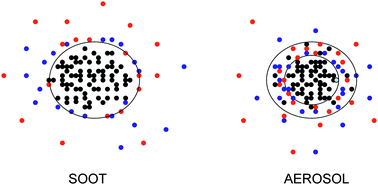Models for the sorption of volatile organic compounds by diesel soot and atmospheric aerosols†
Abstract
The solvation parameter model is used to characterize interactions responsible for the sorption of varied organic compounds by diesel soot and atmospheric aerosols at 15 °C and 50% relative humidity. Individual models are obtained for eight aerosol samples characterized as urban, suburban, rural and coastal. Combining the individual aerosol models resulted in a general aerosol model with only a minor loss of modeling power for alkanecarboxylic acids and low-molecular weight


 Please wait while we load your content...
Please wait while we load your content...